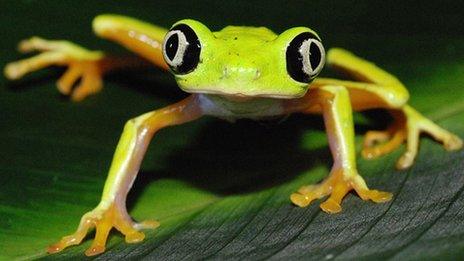Lethal amphibian disease killed off on island
- Published
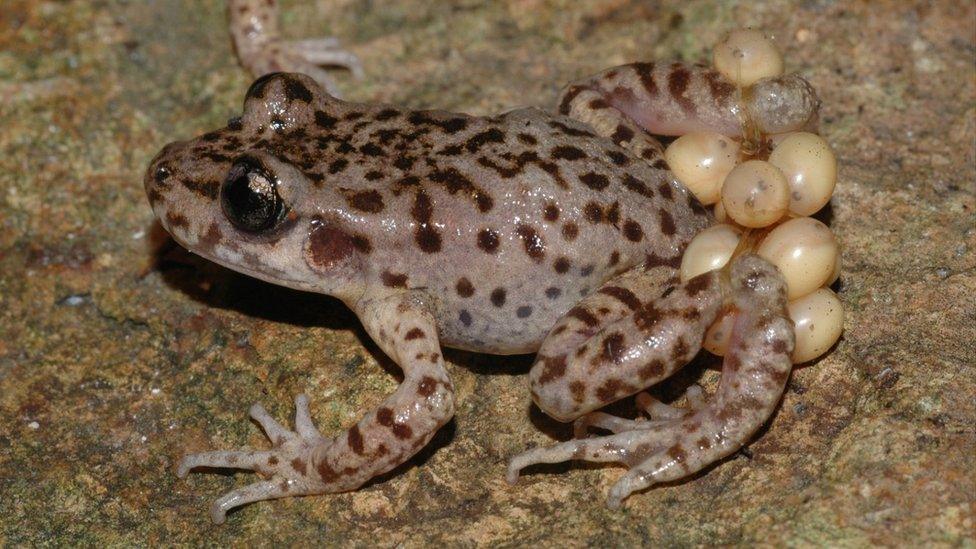
The toad is endemic to the Spanish island of Mallorca
For the first time, researchers have eliminated a devastating amphibian fungal disease in a population of toads.
The chytrid fungus is highly infectious and is responsible for devastating amphibian populations worldwide.
Over five years, a team of researchers was able to clear the disease from toads which are native to the Spanish island of Mallorca.
Details of the work are published in the journal Biology Letters, external.
The scientists collected tadpoles from the wild, transported them to a lab and bathed them in an antifungal solution.
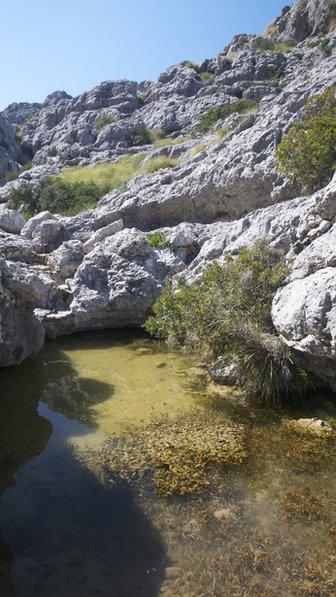
Tadpoles were collected, treated in the lab and then returned by helicopter
They then returned the Mallorcan midwife toad (Alytes muletensis) tadpoles to the collection sites by helicopter.
In addition, they used a common laboratory decontaminant to sterilise the environment around each breeding site.
Dr Trenton Garner, from ZSL's Institute of Zoology, said: "This study represents a major breakthrough in the fight against this highly-destructive pathogen; for the first time we have managed to rid wild individuals of infection for a continued period.
"Amphibian-associated chytrid fungi are a critical conservation issue that requires simple, straightforward and transferrable solutions. Our study is a significant step towards providing these."
The chytrid fungus (Batrachochytrium dendrobatidis) has severely affected over 700 amphibian species worldwide, driving population declines and species extinctions across five continents.
Dr Jaime Bosch, a co-author from Spain's MNCN-CSIC institute, added: "This is the first time that chytrid has ever been successfully eliminated from a wild population - a real positive which we can take forward into further research to tackle this deadly disease."
However in their paper, the researchers acknowledged that the use of their disinfectant in the environment was controversial. They said it was driven by the urgency of the decline in the Mallorcan midwife toad on the island.
- Published26 February 2015
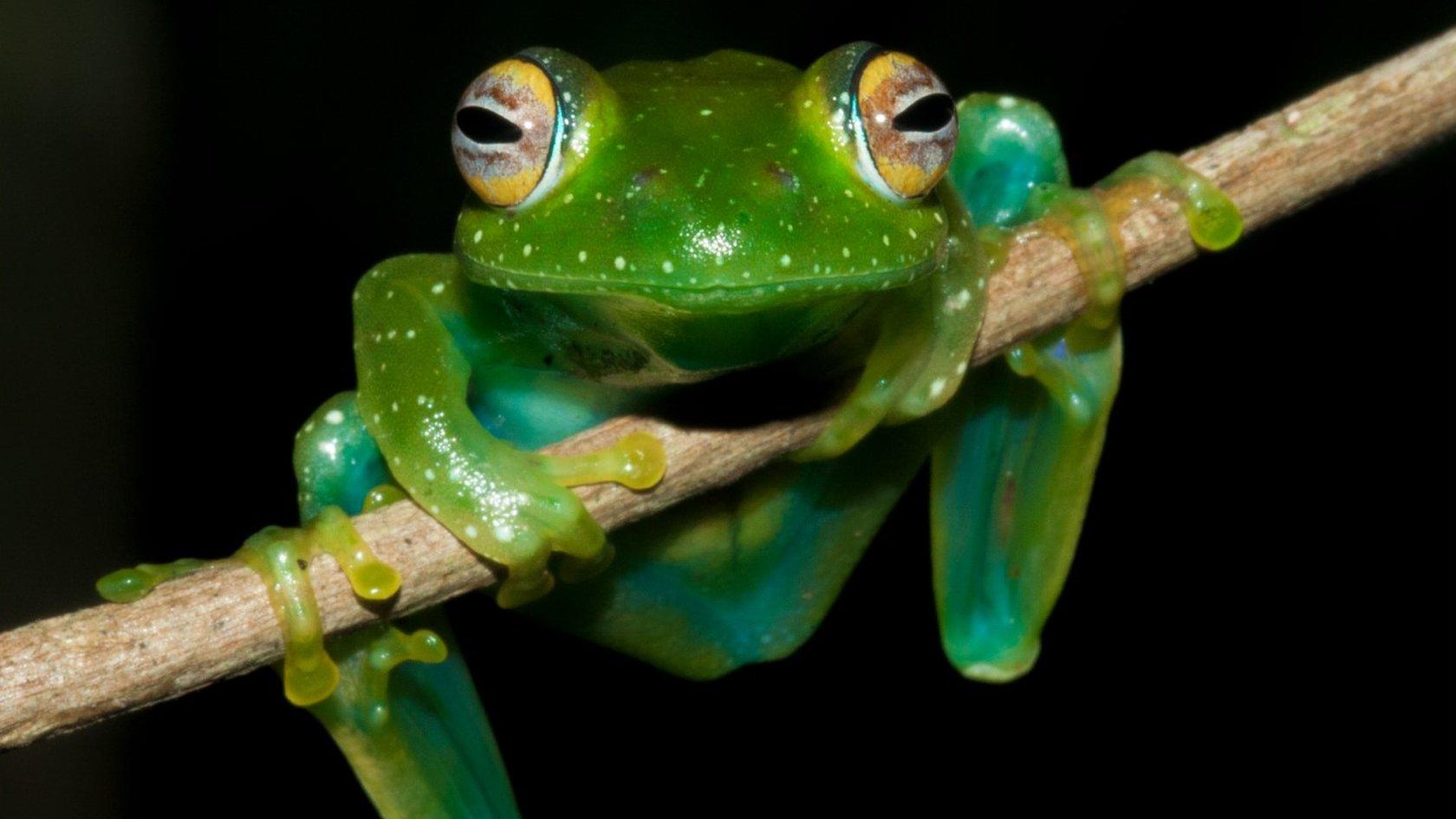
- Published31 October 2014
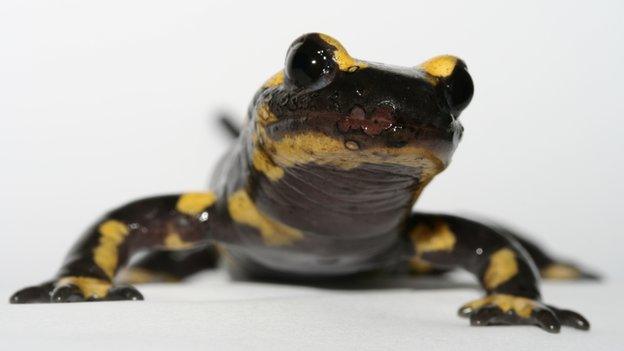
- Published20 November 2013
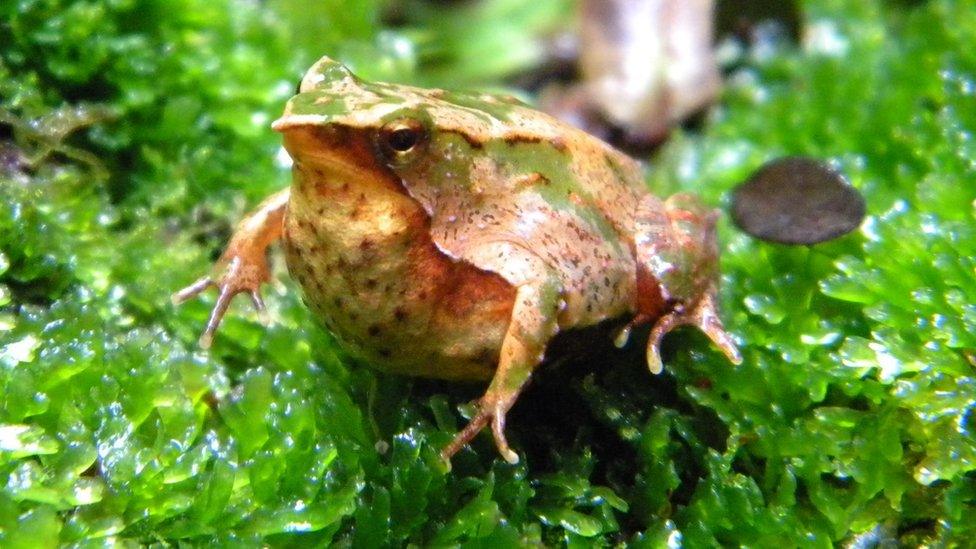
- Published12 August 2012
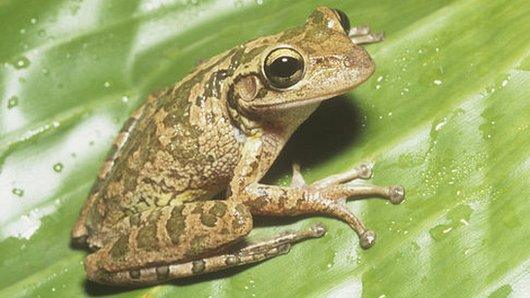
- Published8 November 2011
